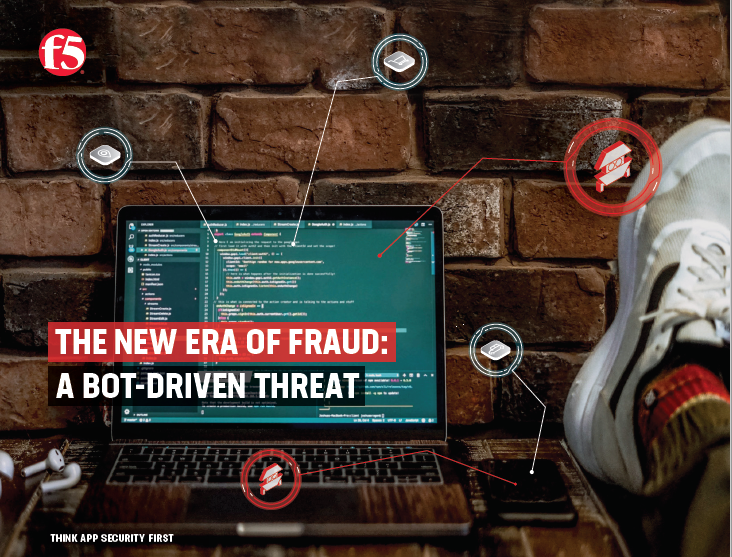Three ways to prevent bot fraud
We take a look at the best ways of bolstering the security posture of your applications

Bots (programs built to do automated tasks) are now the most active presence on the internet, with their traffic surpassing that of humans according to an annual trends report delivered at the Code Conference in 2017.
Whilst these bots drive the technological change which improves customer experience - be it through internet shopping or digital assistants - they also have access to internet users' identity information. Consequently, it is often this same technology which enables fraud. The numbers are frightening, with $6.5 billion dollars lost to fraud in digital advertising 2017, according to the Bot Baseline Report.
Defending against bot fraud can be a never-ending task. Bots are readily available, simple to manipulate and easy to deploy. They are able to pick through business applications looking for any opportunity to profit.
Whilst it is impossible to achieve complete invulnerability, through implementing a holistic defence strategy that makes your applications a more challenging target, cyber criminals are much more likely to focus their attentions elsewhere. With that in mind, here are three ways to increase your chances of bot fraud prevention.
1) Application protection
The most complete defence an organisation can create is with a security device or service which is capable of harbouring full-proxy capabilities, such as a web application firewall (WAF). A WAF protects applications by applying a set of rules covering common cyber attacks, blocking malicious scripts and injections. To achieve this it acts as a buffer between the internet and your applications, helping to apply the right protections where they are most needed.
Not only does a WAF protect applications from vulnerable code and software, but it can also protect against bot-driven attacks by distinguishing between human and machine users by focusing on the attack tool, rather than the attack vector.
The comprehensive capabilities of WAF go a long stretch to protecting against bot fraud, with the placing of a WAF strategy at the central point of your organisation's network allowing other anti-fraud defences to be deployed. To ensure these advantages are fully capitalised however, the right conditions are needed within the organisation.
Get the ITPro daily newsletter
Sign up today and you will receive a free copy of our Future Focus 2025 report - the leading guidance on AI, cybersecurity and other IT challenges as per 700+ senior executives
2) Create an awareness programme
Human interaction with software is only increasing, but many employees are not confident when dealing with bots. Bots are also becoming increasingly sophisticated which makes them difficult to identify even for employees who are familiar with the signs to look out for. As a result of employee inadequacies, holes can appear in the organisation's defence strategy which must be addressed if a WAF is to work effectively.
Implementing a continuous security and awareness program across the entire organisation can enable employees to keep up-to-date with bots. Employees will become aware of the threats they can cause and become versed in methods of protection, both for themselves as individuals and for the wider organisation.
3) Due diligence
Bots are constantly evolving to meet the demands of their users, and so it is critical that organisations also remain on their toes. In addition to the employee awareness programme that should be refreshed regularly, security patches particularly must be kept up-to-date, with unpatched networks a bullseye for malicious bots.
Organisations must also look internally to be able to combat malicious bots. By identifying where they are most vulnerable, they can develop an integrated security strategy across all departments. To help examine themselves, organisations can seek the help of a software partner who can offer a holistic solution to bot fraud, enabling application protection, tightening up network security, setting access controls, providing threat intelligence and endpoint inspection tools. This combination hands back control to the organisation, allowing them to shut down fraudulent activity before it has a serious impact on the business.
-
 Should AI PCs be part of your next hardware refresh?
Should AI PCs be part of your next hardware refresh?AI PCs are fast becoming a business staple and a surefire way to future-proof your business
By Bobby Hellard Published
-
 Westcon-Comstor and Vectra AI launch brace of new channel initiatives
Westcon-Comstor and Vectra AI launch brace of new channel initiativesNews Westcon-Comstor and Vectra AI have announced the launch of two new channel growth initiatives focused on the managed security service provider (MSSP) space and AWS Marketplace.
By Daniel Todd Published
-
 Security experts issue warning over the rise of 'gray bot' AI web scrapers
Security experts issue warning over the rise of 'gray bot' AI web scrapersNews While not malicious, the bots can overwhelm web applications in a way similar to bad actors
By Jane McCallion Published
-
 How applications are attacked
How applications are attackedwhitepaper A year in application security
By ITPro Published
-
 The next wave of bot-driven brute force attacks
The next wave of bot-driven brute force attacksWhitepaper A guide to stopping credential theft
By ITPro Published
-
 The new era of fraud: a bot-driven threat
The new era of fraud: a bot-driven threatSponsored Protecting the capabilities that drive your business means protecting the apps that make them happen
By ITPro Published
-
 Deutsche Telekom routers hit by cyber attack
Deutsche Telekom routers hit by cyber attackNews Up to 900,000 Deutsche Telekom customers affected by hack on the German communications company
By Ingrid Fadelli Published
-
 Bots presenting a substantial risk to banks and retailers
Bots presenting a substantial risk to banks and retailersNews A report revealed the last 90 days have seen a 35 per cent increase in such attacks
By Clare Hopping Published